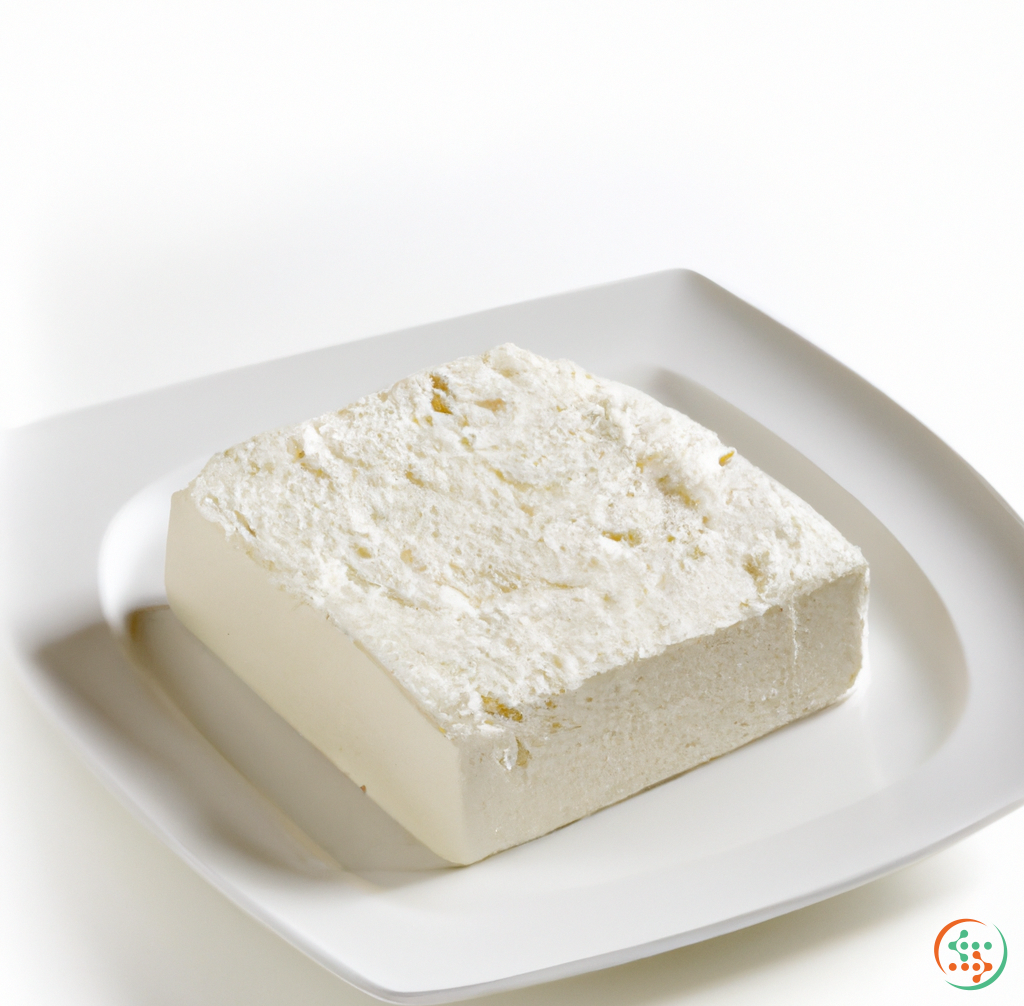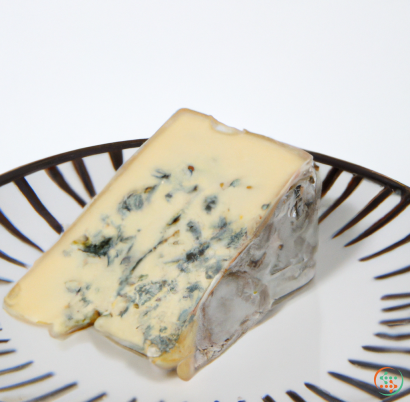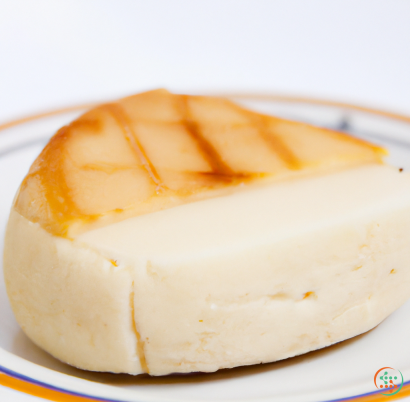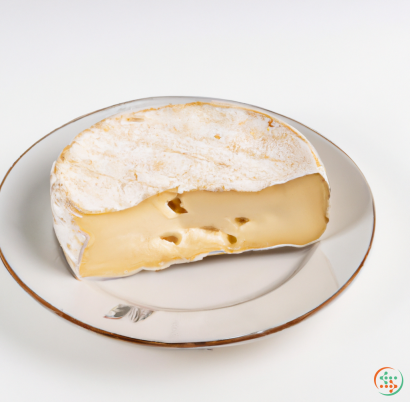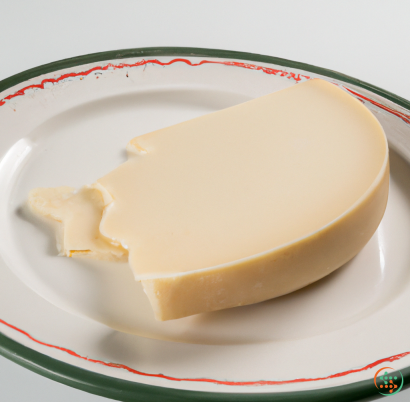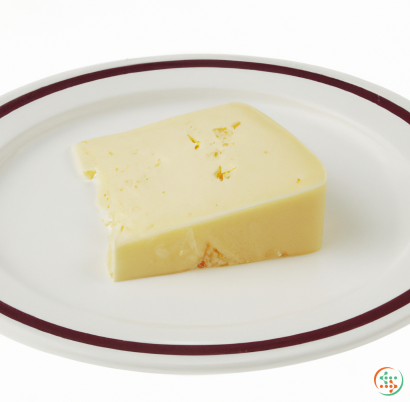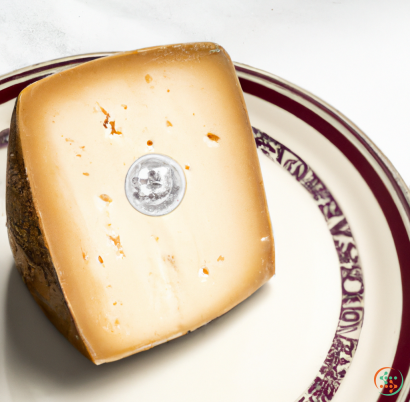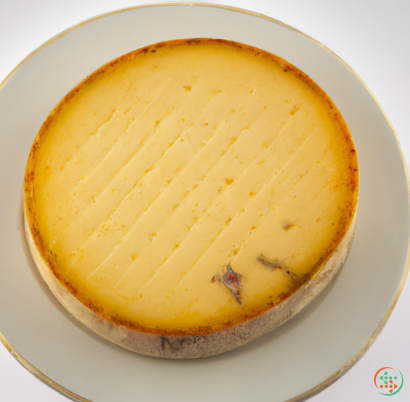Feta
Feta cheese is a type of cheese that has been around for centuries, originating in Greece. It’s made from sheep’s milk and/or goats milk, and sometimes a blend of the two. It is traditionally produced by introducing bacteria or rennet directly into the milk, forming a white, unbleached curd that is then cut and soaked in a brine solution. It has a strong, tangy flavor that is much saltier than typical cheese, and has a slightly crumbly texture.
Due to its long-lasting ability, Feta cheese has become a popular cheese used in many Mediterranean dishes. It’s great as an appetizer, on salads and in sandwiches. It can be purchased in blocks, tubs or slices, making it a versatile cheese for many culinary purposes. Feta can also be served simply with a light drizzle of olive oil, herbs and spices to give it an extra kick of flavor.
But why is Feta so popular in the Mediterranean region? Its flavor is unique and it adds a distinct salty and tangy element to recipes that are difficult to find in other types of cheese. Its long shelf-life also makes it a great choice for use in dishes that require long cooking times, such as lasagna or moussaka.
Feta cheese has been made in Greece for centuries, with some evidence of its production going back as far as the 5th century B.C. It’s said that the Spartans and Athenians used the cheese in their diets and made it using the same methods that are used today. In fact, feta cheese has been around for so long, that it was widely used by ancient Greek soldiers to provide them with a high-energy food that was easy to transport and carried with them.
Feta cheese is also widely used throughout Greece in everyday dishes. It is often used in a variety of pies and pastries, such as Spanakopita (spinach and feta cheese pie). It is also popularly found in salads, either crumbled on top or incorporated into the dish itself. Feta cheese is also often diced and used as a topping for pizza or stuffed into omelets. It is also used to top off tarts and quiches.
One of the reasons Feta cheese is so popular in recipes is because it is a great source of calcium. It contains a good amount of phosphorus as well, which helps promote strong bones and teeth. Feta is also a great source of vitamin A, B-6, C, K and E, as well as riboflavin, thiamine and niacin.
For those who are looking to enjoy the rich taste of Feta without feeling guilty, it is possible to buy low-fat versions of Feta cheese. Low-fat Feta cheese still has the same classic taste, but it is much lower in cholesterol and fat content. Low-fat Feta cheese is also easier to digest than regular Feta, making it a great option for individuals who are lactose intolerant.
So, if you are looking for a unique cheese that is savory, sharp and flavorful, look no further than Feta cheese. Its long shelf-life makes it convenient for long cooking times and its versatile use in recipes makes it a great go-to cheese for many dishes. Not to mention, it has plenty of vitamins and minerals that make it healthy too!
Feta: A Journey from Sheep to Plate
The path from sheep to plate is a long and intriguing one for feta cheese. It begins with the simple practice of milking the sheep, then the curdling of the sheep’s milk, followed by the aging process of the cheese and eventually the packaging, preparation and consumption of the finished product. It’s a journey that begins with the fundamentals of the animal husbandry and ends with someone savoring the flavor of a beloved Greek dish.
Animal Husbandry & Milk Collection
The production of feta cheese starts on the farm, where sheep are herded, cared for, and milked. Although both goat and sheep’s milk can be used, it is most commonly made from sheep’s milk owing to its higher fat content.
In traditional Greek farmsteads, sheep are usually herded and collected from the pasture by a herder. During the summer months the sheep are typically moved between fields of pasture to maximise the grazing quality, this process can involve a season-long tour of numerous fields. Depending on the region, the method of moving the sheep around is either done by foot or with the help of a vehicle.
When the sheep reach the paddock, and the order is given, the shepherd sets to work herding the animals. During this process, the sheep are moved in a circular formation and the shepherd keeps a close eye on the group. This ensures the animals move in the right direction and don’t wander too far.
At the end of the grazing period, the sheep are gathered into the milking shed. There the farmer lassoes their heads to a chain and seat them one by one onto the milking bench. The milkers then milk the sheep into the trough and collect the milk.
The milk collected is brought back to the main farmhouse for processing. During this step the milk is poured into a large vat and the addition of a starter culture and calcium chloride is made to the milk. These additions will help the milk to curdle and obtained the right acidity level.
Curdling & Salting
The milk left in the vat is left to sit for a while while the starter culture, also known as whey, ripens and begins to develop the flavor. The starter culture helps to condition and introduce the desired flavor of the feta cheese. This ripening of the milk can take anywhere between 24 to 36 hours, depending on the quantity of milk and the temperature of the room it is stored in.
Once the milk has ripened, it is time for the curdling process. Preparing the curds means adding an additional ingredient to the vat of milk, usually a mixture of an acid, like vinegar or lemon juice, and a small amount of rennet.
The curds form and can quickly be seen as solid pieces in the milk. At this point, the shepherd takes the lid off the vat and passes a large pot over the top of the vat to catch the curds in. The shepherd then lifts the curds from the pot and places them into a tray lined with cloth. This allows the cheesecloth to strain and filter off the whey.
Once the curd have been cut and separated from the whey, they are placed into a mold. Here the cheese is pressed hard to retain its shape. After a few hours in the press, the cheese is then placed into a brine bath and left to swim in a salty brine solution for a few days. The brine helps to give the cheese its unique flavor, texture, and the most important feature - its preservation qualities.
Note: Feta cheese used in the USA typically doesn’t have the same characteristics as feta cheese made in Greece, as in order to comply with US laws, any cheese labeled ‘feta’ in the US has to be cured longer at higher temperatures (130F for 30 min). This process removes much of the characteristic sharp taste of Greek feta.
Aging & Packaging
Once salted, the cheese is transferred to an aging room, usually a cave-like structure built several meters beneath the ground, in which the humidity and temperature are kept relatively consistent. Here, the cheese goes through the aging process, a crucial step in the formation of its flavor and texture.
The aging process of feta cheese can last anywhere between three months to nine months, depending on the size and variety. During this period of time, the flavor of the cheese changes and continues to intensify.
Once the feta cheese has been aged, it is removed from the cave and sent to warehouse for packaging. Here the cheese is weighed out and put into plastic containers or wooden boxes ready to be shipped to stores and restaurants.
Preparation & Consumption
Once the feta cheese reaches its destination, it is unpacked and put out on the shelves ready for customers to buy. Depending on the customer’s preferences they can buy the cheese either in traditional blocks or pre-cut in cubes.
Feta cheese is an incredibly versatile ingredient and can be used in a variety of dishes and creams. Some of the most popular recipes include feta cheese and spinach pies, salads, quiches, and cheese-filled pastries.
However, one of the most popular and classic uses of feta cheese is in the Greek dish known simply as ‘feta cheese’. This dish is usually prepared with tomatoes, onions, and olive oil. Once the ingredients are combined, the dish is topped with fresh feta cheese and baked in the oven to golden perfection. The result is a succulent and flavorful dish that is sure to be appreciated by anyone who tries it.
Feta cheese is a fascinating product with a journey that spans many places and cultures. From milk on the farm, to aging in a cave and packaging in a warehouse, the feta cheese’s journey follows a long path, but it all comes together on the dinner plate.
The journey of feta cheese, from farm to plate, is a compelling story of food science and tradition that captures the distinct and unique flavor of this beloved Greek dish. With an array of culinary applications, feta cheese is sure to remain a staple of many diets for years to come.
| Vitamin A | 0.125 mg | |
| Beta-Carotene | 0.003 mg | |
| Vitamin D | 0.4 ug | |
| Vitamin D3 | 0.4 ug | |
| Vitamin E | 0.18 mg | |
| Vitamin K | 0.0018 mg | |
| Vitamin B1 | 0.15 mg | |
| Vitamin B2 | 0.84 mg | |
| Vitamin B3 | 0.99 mg | |
| Vitamin B4 | 0.0154 grams | |
| Vitamin B5 | 0.97 mg | |
| Vitamin B6 | 0.42 mg | |
| Vitamin B9 | 0.032 mg | |
| Vitamin B12 | 0.00169 mg |
| Calcium | 0.493 grams |
Daily Value 1.3 g
|
| Iron | 0.65 mg |
Daily Value 0.018 g
|
| Magnesium | 0.019 grams |
Daily Value 0.4 g
|
| Phosphorus | 0.337 grams |
Daily Value 1.25 g
|
| Potassium | 0.062 grams |
Daily Value 4.7 g
|
| Sodium | 0.917 grams |
Daily Value 2.3 g
|
| Zinc | 0.00288 grams |
Daily Value 0.011 g
|
| Copper | 0.03 mg |
Daily Value 0.9 mg
|
| Manganese | 0.03 mg |
Daily Value 0.0023 g
|
| Selenium | 0.015 mg |
Daily Value 0.055 mg
|
| Tryptophan | 0.2 grams | |
| Threonine | 0.637 grams | |
| Isoleucine | 0.803 grams | |
| Leucine | 1.395 grams | |
| Lysine | 1.219 grams | |
| Methionine | 0.368 grams | |
| Cystine | 0.083 grams | |
| Phenylalanine | 0.675 grams | |
| Tyrosine | 0.668 grams | |
| Valine | 1.065 grams | |
| Arginine | 0.47 grams | |
| Histidine | 0.397 grams | |
| Alanine | 0.639 grams | |
| Aspartic Acid | 0.779 grams | |
| Glutamic Acid | 2.421 grams | |
| Glycine | 0.097 grams | |
| Proline | 1.378 grams | |
| Serine | 1.169 grams |
| Total Sugars | 4.1 grams |
per 100g
|
| Caproic acid (6:0) | 0.57 grams |
|
| Caprylic acid (8:0) | 0.55 grams |
|
| Capric acid (10:0) | 1.98 grams |
|
| Lauric acid (12:0) | 1.16 grams |
|
| Myristic acid (14:0) | 2.76 grams |
|
| Palmitic acid (16:0) | 5.15 grams |
|
| Stearic acid (18:0) | 1.49 grams |
|
| Butyric acid (4:0) | 0.78 grams |
|
| Total Saturated fatty acids: | 14.44 g | |
| Oleic acid (18:1) | 3.98 grams |
|
| Palmitoleic acid (16:1) | 0.39 grams |
|
| Total Monounsaturated fatty acids: | 4.37 g | |
| Linolenic acid (18:3) | 0.27 grams |
|
| Linoleic acid (18:2) | 0.33 grams |
|
| Total Polyunsaturated fatty acids: | 0.6 g | |
| Cholesterol | 0.09 grams |
|
| Total Sterols: | 0.09 g | |
